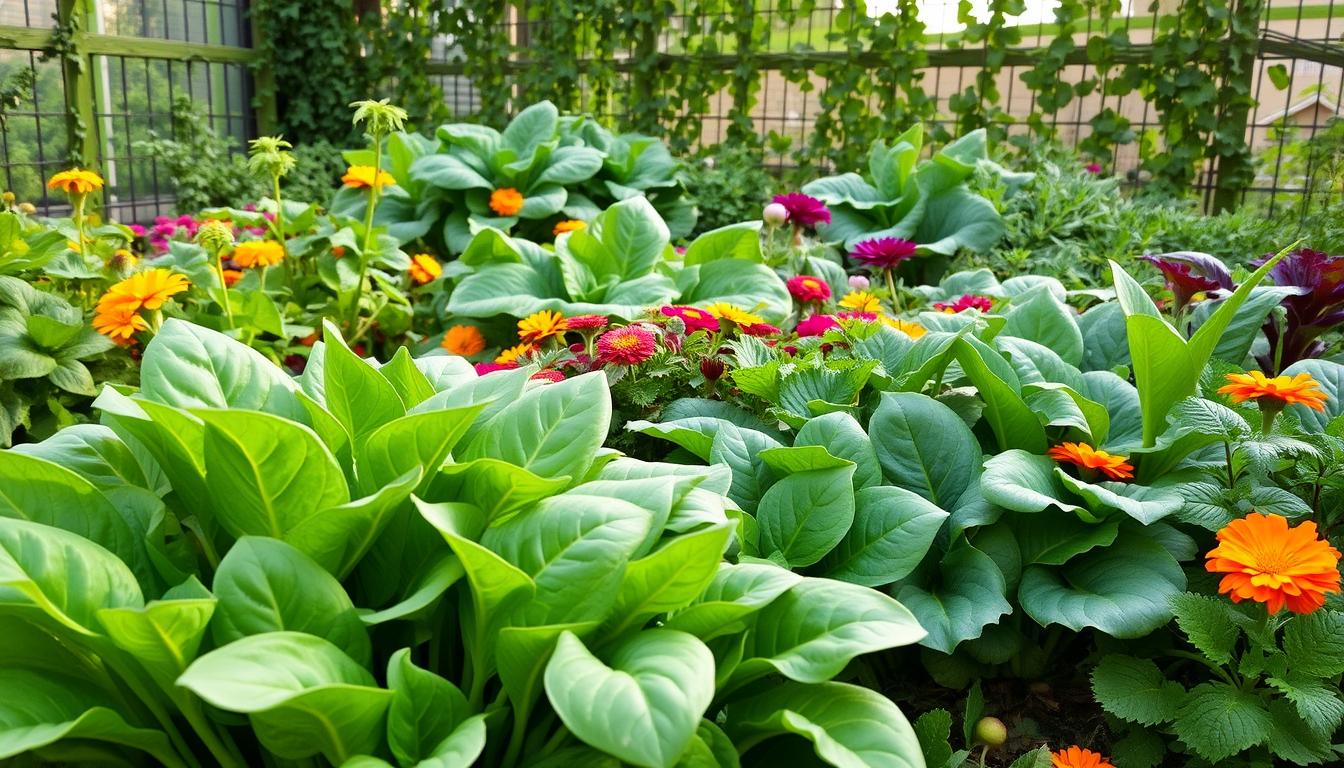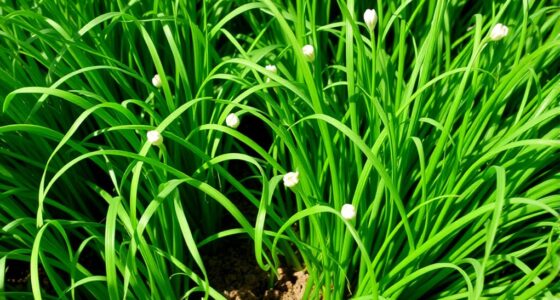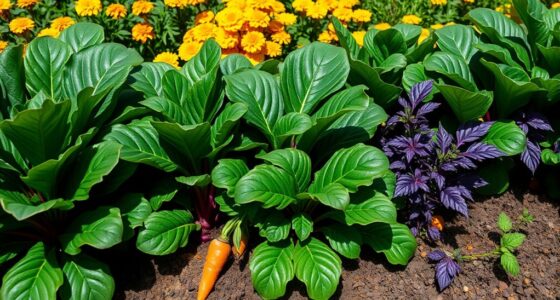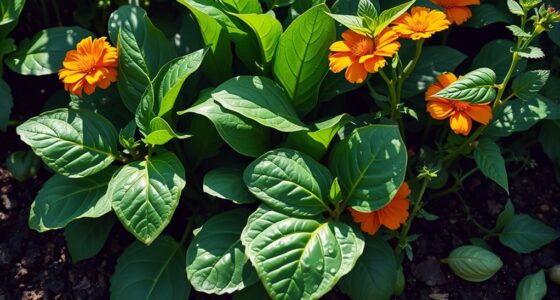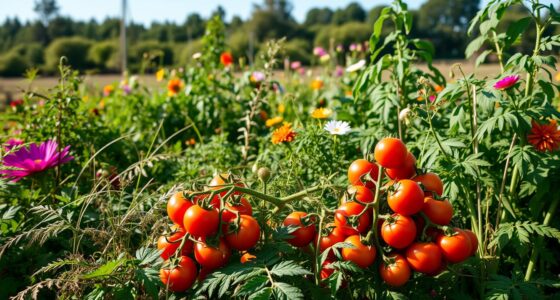Imagine stepping into your garden, surrounded by the vibrant hues of flourishing greens, the aroma of fresh herbs wafting through the air, and the satisfaction of knowing you are cultivating a healthier, more bountiful harvest. Spinach is not just a resilient green but also a canvas for creativity when it comes to companion planting. By strategically pairing spinach with the right companions, you can enhance its growth and flavor, while also fostering a thriving ecosystem in your garden. Understanding the best plants to grow with spinach can elevate your gardening game and help you manage pests effectively, resulting in a beautiful and productive haven. In this guide, we will explore the ins and outs of companion planting for spinach, so you can enjoy a greener thumb and a more vibrant garden all season long.
Key Takeaways
- Companion planting improves spinach growth and flavor.
- Choosing the right plants can help deter pests naturally.
- Herbs, vegetables, and flowers all have their place in a spinach garden.
- A well-planned garden layout maximizes space and productivity.
- Understanding soil and sunlight needs is crucial for success.
What Are Companion Plants for Spinach?
Companion planting for spinach involves strategically selecting plants that benefit one another when grown side by side. Understanding these relationships can help you maximize the potential of your garden. The right spinach garden companions can improve soil health, attract beneficial insects, and help deter pests.
Definition and Importance
Companion plants are those that, when grown together, enhance each other’s growth or provide protection from pests. This practice has been used for generations and is critical for organic gardening. By selecting compatible plants, you foster an environment that can lead to healthier crops and potentially higher yields.
Benefits of Companion Planting
There are several advantages to using companion planting for spinach:
- Soil Health: Certain companion plants can enrich the soil by fixing nitrogen or improving nutrient balance.
- Pest Control: Some plants naturally repel insects, protecting your spinach from common pests.
- Attracting Beneficial Insects: Certain flowers and herbs can attract pollinators and predatory insects, which help maintain a healthy garden ecosystem.
- Efficient Space Use: By pairing plants effectively, you can maximize your garden’s space and productivity.
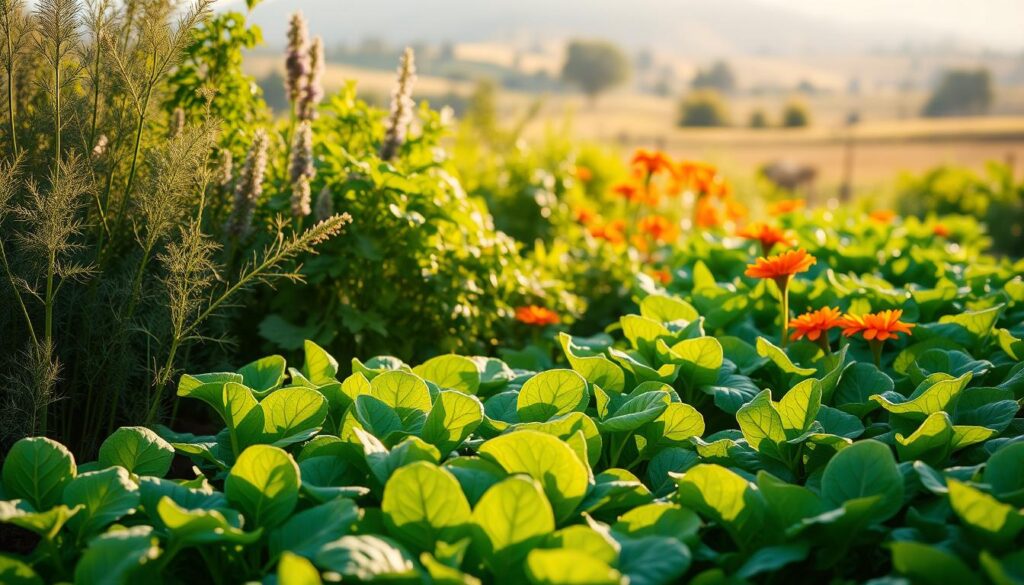
Ideal Companion Plants for Spinach
When growing spinach with companion plants, selecting the right types can enhance both growth and flavor. Various plants work harmoniously with spinach, helping to create a thriving garden ecosystem. Below, you’ll find some of the ideal plants for spinach that can contribute positively to your gardening success.
Best Herbs to Plant with Spinach
Herbs can play a significant role in pest control and enhancing flavor. Consider planting:
- Oregano – This herb helps repel pests that might target spinach.
- Cilantro – Known for its strong aroma, it keeps unwanted insects away.
- Rosemary – It not only enhances your dishes but also deters harmful pests.
Compatible Vegetables and Fruits
Incorporating compatible vegetables and fruits can maximize the benefits of your garden space. Some excellent choices include:
- Beans – These fix nitrogen in the soil, enriching it for spinach.
- Peas – Like beans, they improve soil fertility and share similar growing conditions.
- Radishes – They can grow quickly, allowing for earlier harvesting without competing with spinach.
Flowers That Thrive with Spinach
Adding flowers not only beautifies your garden but can also support pest management. A few beneficial options are:
- Marigolds – They attract pollinators and repel nematodes.
- Nasturtiums – These flowers draw aphids away from spinach, offering protection.
- Calendula – It serves similar purposes as marigolds and adds vibrant color to your garden.
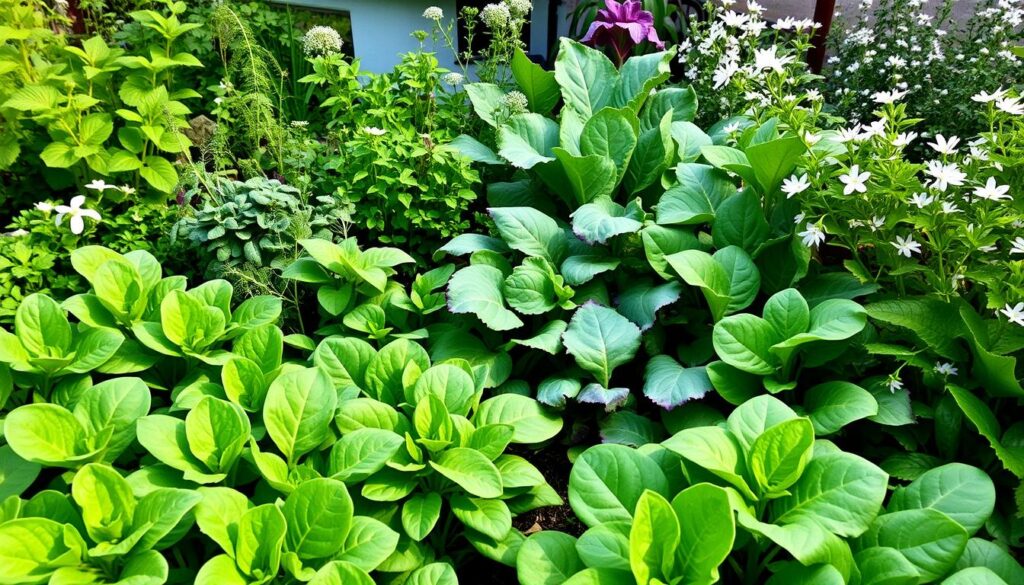
Plants to Avoid Near Spinach
When planning your garden, it’s crucial to consider which plants to avoid near spinach. Certain vegetables and herbs can compete for resources or even attract pests. Knowing about these plants that hinder spinach growth will help you maintain a healthy and productive garden. Below are some common culprits.
Common Vegetables that Compete
Spinach thrives best when there’s minimal competition for nutrients and light. Some vegetables that often crowd out spinach include:
- Mint: This herb can overpower other plants with its aggressive growth.
- Corn: Tall and dense, corn shades spinach and steals valuable resources.
- Fennel: Not only does it compete for space, but it can also produce chemicals that inhibit spinach growth.
Potential Pest Problems
In addition to competition, certain crops can draw pests that may be harmful to your spinach plant companions. For example, crops like carrots and beets might attract aphids, which can quickly spread and damage spinach. It’s essential to strategize your planting layout to keep these potential pest problems at bay.
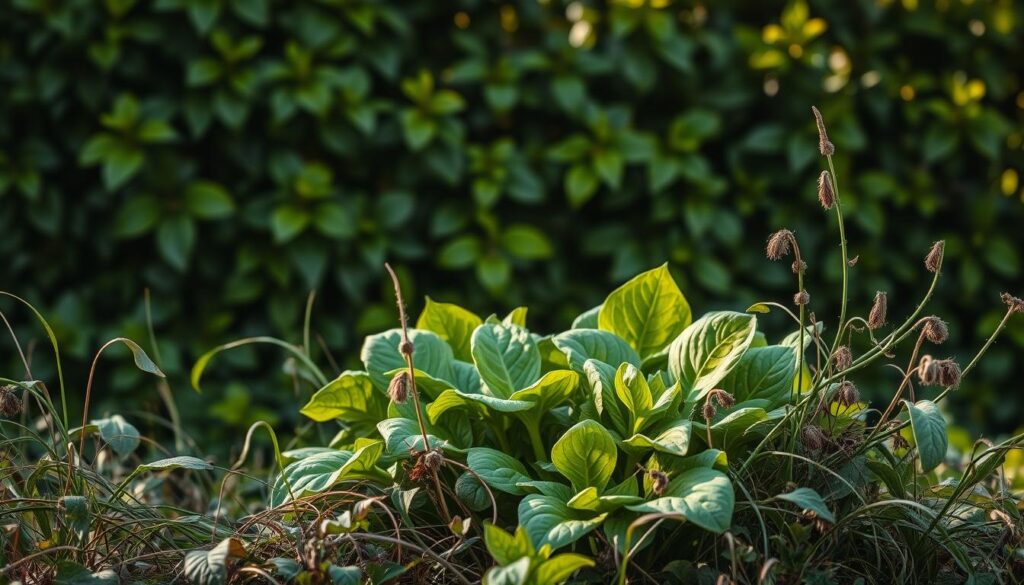
Soil and Sun Requirements
Understanding the soil and sunlight requirements for growing spinach can greatly enhance your gardening success. Spinach garden conditions demand specific attention to soil quality and light exposure. Healthier plants lead to a better yield and improved taste, making these factors vital for your gardening endeavors.
Ideal Soil Conditions for Spinach
To meet the soil needs for spinach, focus on rich, well-draining soil. The ideal pH level for spinach ranges between 6.0 and 7.0, which promotes nutrient absorption. You may consider amending your soil with organic compost or well-rotted manure to improve its fertility. Here are key features for optimal soil:
| Soil Feature | Description |
|---|---|
| Drainage | Good drainage prevents root rot and ensures healthy growth. |
| Nutrient Density | Rich in nitrogen and other vital nutrients for robust plant health. |
| pH Level | 6.0 – 7.0 is ideal for spinach development. |
| Texture | A loamy texture supports proper root establishment. |
Sunlight Needs for Companion Plants
In addition to soil considerations, sunlight plays a crucial role in the health of spinach and its companions. Spinach thrives in full sun but can tolerate partial shade, especially in warmer climates. Understanding the light requirements for your companion plants can influence your planting strategy:
- Most herbs and leafy greens prefer full sun (6-8 hours).
- Some root vegetables benefit from partial shade, making careful placement important.
- Consider seasonal sunlight variations in your garden layout.
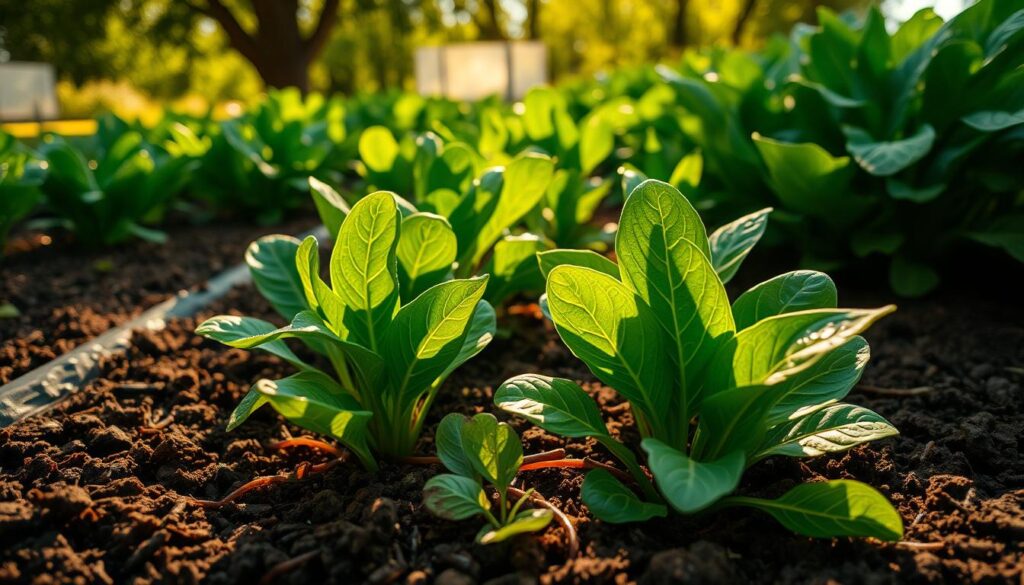
Watering and Care Tips
Caring for spinach plants involves understanding their specific needs for moisture and nutrients. Proper watering practices are critical for healthy growth and preventing issues such as bolting. Spinach thrives in consistently moist soil, thus, it’s essential to establish a routine that considers both your spinach and its companion plants.
Best Watering Practices
When it comes to watering spinach companion plants, the focus should be on maintaining even soil moisture. Aim to water deeply but infrequently, allowing the top inch of soil to dry out between waterings. This encourages roots to grow deep, enhancing stability.
- Water in the early morning to reduce evaporation.
- Check the soil moisture with your fingers; if it feels dry, it’s time to water.
- Use a soaker hose or drip irrigation for efficient watering.
Nutrient Needs of Spinach and Companions
Providing adequate nutrients is vital for the health of your spinach and its neighboring plants. Organic fertilizers, such as compost and well-rotted manure, can support their growth and yield. Regular application of these amendments will enrich the soil, benefitting the entire garden.
- Incorporate compost into the soil before planting.
- Side-dress spinach with organic fertilizer every few weeks during the growing season.
- Monitor for nutrient deficiency signs, such as yellowing leaves.

Seasonal Planting Guide
Understanding the optimal spinach planting times is essential for a successful harvest. Spinach thrives in cool weather, making it an ideal crop for spring and fall. The best times to sow spinach seeds are typically in early spring, around March or April, and again in late summer, ideally in August, so plants can mature before the onset of winter. These planting times allow for maximum growth and flavor, contributing to your garden’s overall yield.
When to Plant Spinach
For the best results, consider the climate in your area when determining the exact spinach planting times. In cooler regions, starting seeds indoors in late winter can give them a head start. Transplant them outdoors when the soil temperature reaches about 40°F. For warmer climates, sow seeds directly into the ground in early spring and again in the late summer to avoid the heat of mid-summer when spinach may bolt.
Timing for Companion Plants
Seasonal companion planting is crucial for enhancing your spinach crop’s growth. Planting compatible flowers, herbs, and other vegetables alongside spinach can deter pests and promote healthier plants. For instance, radishes can be planted at the same time as spinach to maximize space. Ensure that these companion plants have similar growth cycles and can thrive in the same conditions as spinach. A well-planned schedule enhances your garden’s productivity, leading to a bountiful harvest.
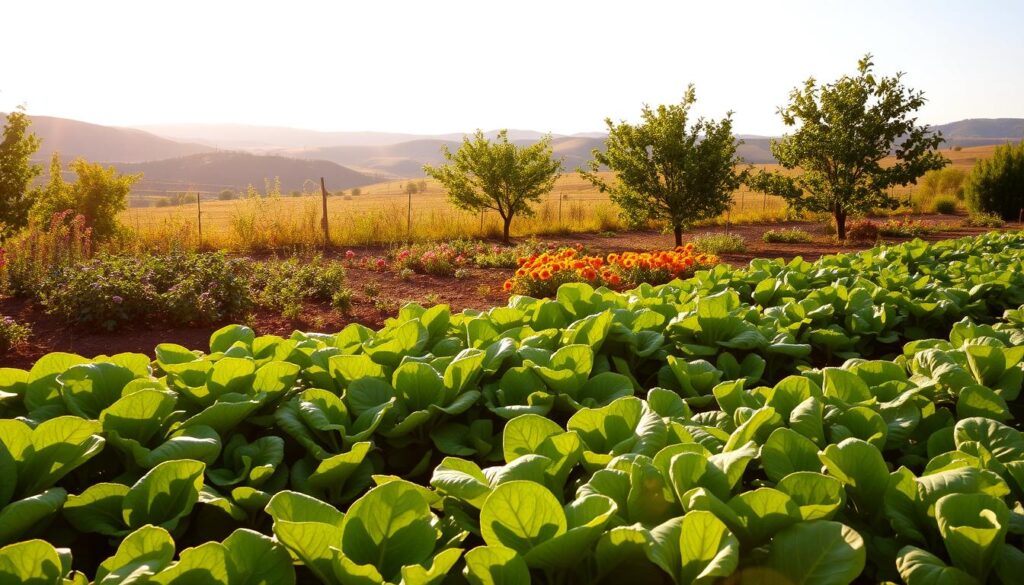
Pest Control with Companion Plants
Using companion plants can greatly enhance your pest control for spinach efforts. Certain plants naturally repel common pests and create a more balanced garden ecosystem. By selecting the right pairings, you can cultivate a flourishing space that minimizes pest issues.
Natural Pest Deterrents
Many plants have evolved to emit scents or produce compounds that deter pests. Incorporating these companion plants that deter pests will not only protect your spinach but also promote overall garden health. Here are a few effective options to consider:
- Marigolds: Their strong scent confuses and repels aphids and nematodes.
- Nasturtiums: These flowers attract aphids away from spinach, serving as a trap crop.
- Basil: This aromatic herb benefits spinach by repelling flies and mosquitoes.
Attracting Beneficial Insects
In addition to repelling pests, certain companion plants can attract beneficial insects that aid in your pest control for spinach. Ladybugs, lacewings, and hoverflies feed on aphids and other harmful pests. To draw these helpers, consider planting the following:
- Yarrow: Known for attracting ladybugs, this plant boosts biodiversity.
- Fennel: Helps to lure beneficial insects while providing natural pest control.
- Queen Anne’s Lace: This wildflower draws in lacewings, enhancing pest management.
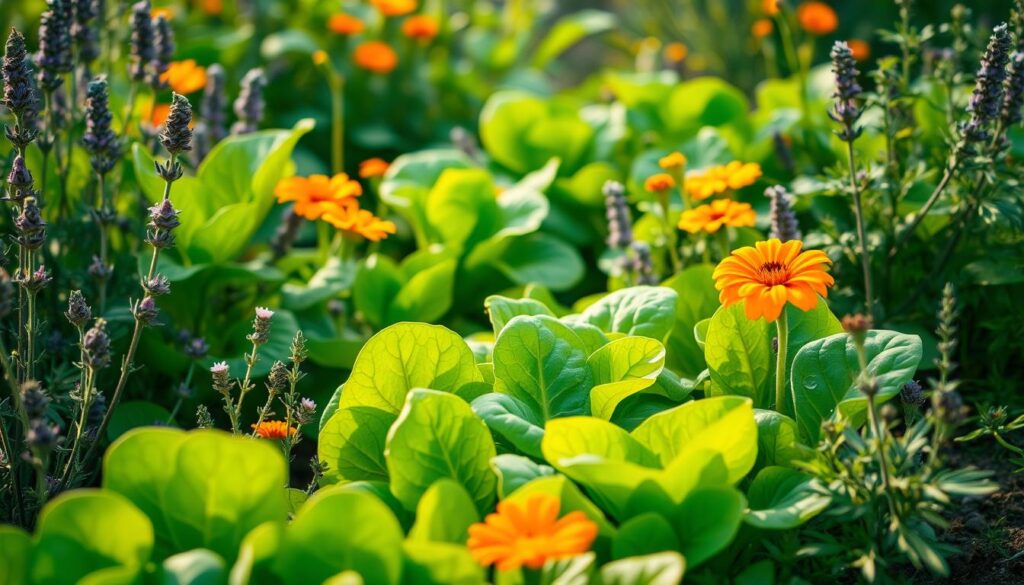
Creating a diverse planting environment with these strategies ensures a natural method for maintaining healthy spinach crops while efficiently controlling pests.
| Companion Plant | Pest Deterred | Beneficial Insect Attracted |
|---|---|---|
| Marigolds | Aphids, nematodes | — |
| Nasturtiums | Aphids | — |
| Basil | Flies, mosquitoes | — |
| Yarrow | — | Ladybugs |
| Fennel | — | Beneficial insects |
| Queen Anne’s Lace | — | Lacewings |
Benefits of Growing Spinach with Others
Growing spinach alongside other plants offers multiple advantages that enhance both your gardening experience and the quality of your harvest. Understanding these spinach and companion plants benefits can significantly change how you approach gardening, particularly when it comes to taste and space utilization.
Enhanced Flavor and Growth
When spinach is grown in the company of certain herbs and vegetables, it often experiences a boost in flavor. Companion plants, such as garlic or chamomile, can improve spinach’s overall taste through nutrient interactions and pest deterrence. This complementary growth results in healthier plants and richer flavors in your dishes.
Maximizing Garden Space
Optimizing garden space is essential for any gardener looking to maximize yield. By strategically planting spinach with compatible companions, you utilize available soil more effectively. For instance, deep-rooted plants can coexist with shallow-rooted spinach, making the most of vertical and horizontal space. You can create efficient layouts that allow for a more productive garden, even in smaller areas.
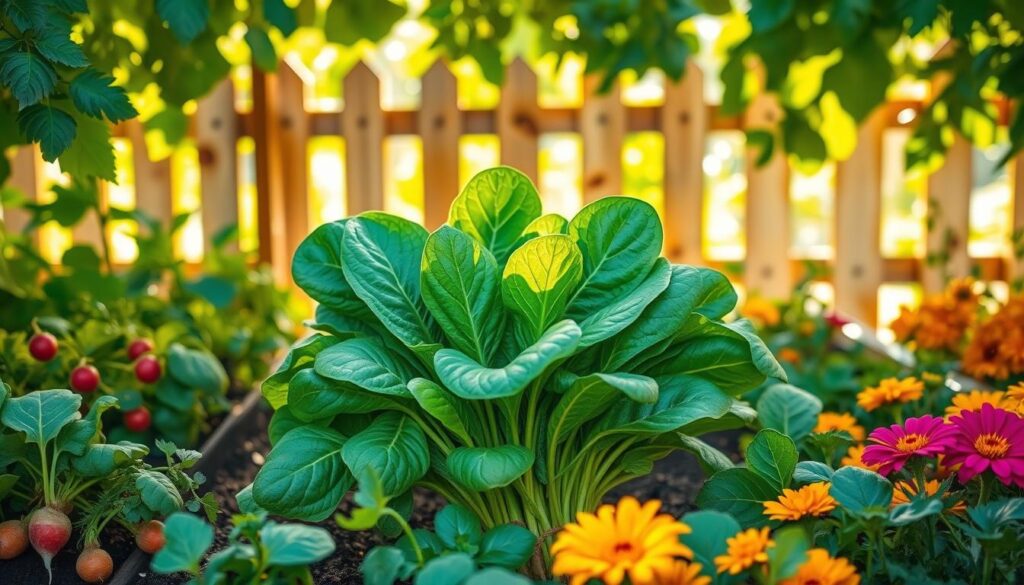
How to Plan Your Companion Garden
Designing a fruitful garden involves understanding effective methods for planning companion planting. When it comes to spinach, utilizing a strategic garden layout can greatly enhance growth potential and pest resistance. Follow these layout strategies alongside tips for rotating crops to maintain overall soil health and boost your yield.
Layout Strategies for Companion Planting
To make the most out of your garden layout for spinach, consider the following tips:
- Two-Row Pairing: Place spinach between companion plants like carrots or radishes. This arrangement provides shade and helps retain moisture.
- Intercropping: Scatter various compatible herbs and flowers like basil and marigold throughout your spinach plants. This will maximize your garden space.
- Vertical Gardening: Use trellis supports for climbing plants near your spinach. This method optimizes space and allows better sunlight access for all plants.
Tips for Rotating Crops
Implementing crop rotation is essential in planning companion planting. It helps avoid soil nutrient depletion and pest accumulation. Consider these simple rotation strategies:
- Follow the Seasons: Alternate spinach with legumes or shallow-rooted crops. This diversifies the nutrients in the soil.
- Group Similar Plant Families: Ensure plants from the same family do not follow each other in the rotation to mitigate pest problems.
- Divide Your Garden: Section off areas to rotate specific crops yearly, allowing for efficient management and enhanced growth for each crop.
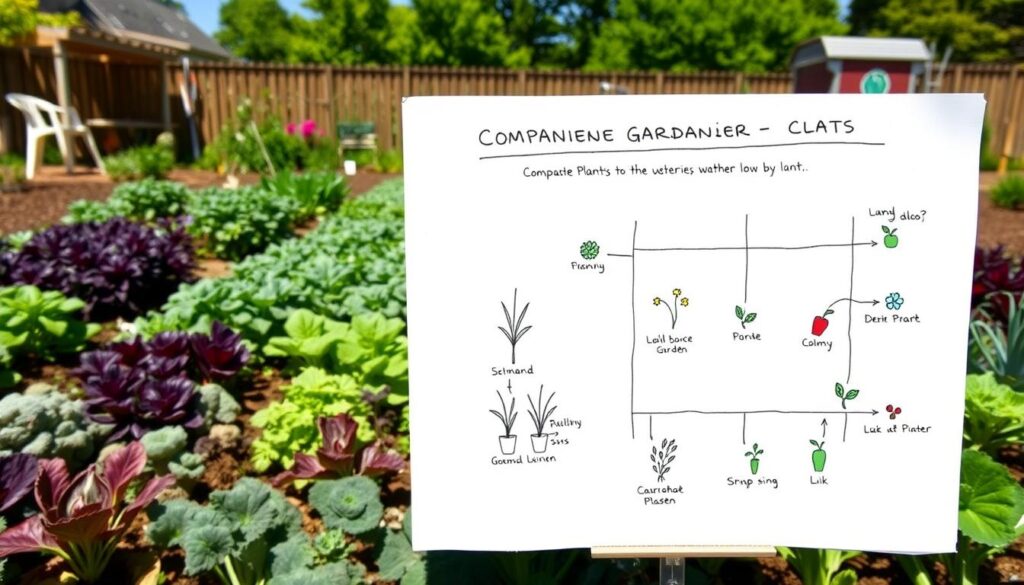
Harvesting Spinach and Its Companions
Knowing the best times for harvesting spinach plants is crucial for optimal flavor and freshness. Spinach can be harvested at various stages, but timing your spinach harvest correctly ensures that you enjoy the best yields. By recognizing signs of readiness, you can maximize your crop and maintain plant health.
Ideal Harvest Times
For the best taste, consider the following ideal harvest times:
- Baby spinach: Typically ready in 30 to 45 days after planting.
- Mature spinach: Generally harvested around 45 to 60 days, depending on the variety.
- Seasonal considerations: Harvest in the cooler months for enhanced flavor.
How to Harvest Without Damage
To ensure that your harvesting spinach plants thrive post-harvest, follow these techniques:
- Use a sharp knife or garden scissors to cut leaves at the base, avoiding damage to surrounding plants.
- Harvest in the early morning when moisture levels are higher; this helps in preserving leaf crispness.
- Remove only the outer leaves first, allowing the center of the plant to continue growing.
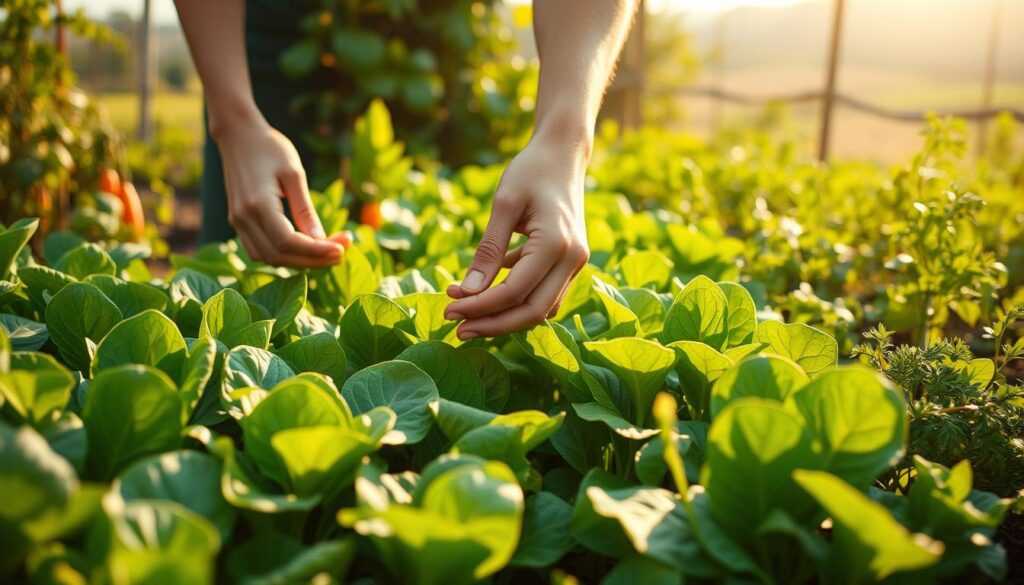
Preserving Spinach and Companion Plants
Learning how to preserve spinach and companion herbs can greatly enhance your kitchen experience while minimizing waste. Proper techniques for storing companion plants not only maintain their flavor but also ensure maximum freshness. In your garden routine, adding preservation methods can make your culinary creations even more delightful.
Techniques for Storing Fresh Herbs
Different herbs have varying preservation methods. Here are some effective techniques you can use:
- Refrigeration: Store fresh herbs in a damp paper towel inside a plastic bag. This method keeps the herbs fresh longer.
- Drying: Hang bunches of herbs upside down in a dry, dark place to allow natural drying. Once dried, store them in airtight containers.
- Jar Method: Place herb stems in a jar with a small amount of water. Cover loosely with a plastic bag and store in the refrigerator.
Freezing and Dehydrating Spinach
Freezing and dehydrating spinach are excellent ways to preserving spinach long-term. Each method has its benefits that can accommodate your cooking preferences:
- Freezing: Start by washing, blanching, and cooling spinach before packing it into freezer bags. Remove as much air as possible to prevent freezer burn.
- Dehydrating: Use a dehydrator or an oven set to low heat. Spread spinach leaves out in a single layer until they become crisp, then store in airtight containers.
| Technique | Pros | Cons |
|---|---|---|
| Refrigeration | Maintains freshness; easy access | Short-term storage only |
| Drying | Long shelf life; light weight | Flavor intensity may diminish |
| Freezing | Retains nutritional value; versatile in cooking | Takes up freezer space |
| Dehydrating | Compact storage; concentrated flavor | Requires equipment; may alter texture |
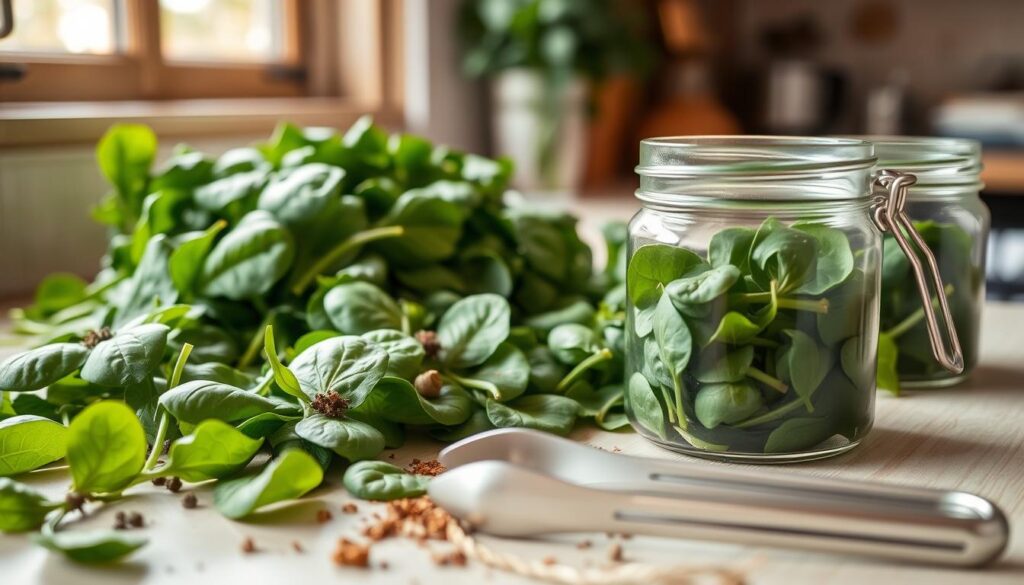
Recipes Featuring Spinach and Its Companions
Cooking with spinach offers endless possibilities in the kitchen. You can create fresh, flavorful dishes by incorporating spinach and its companion plants. This section shares refreshing salad ideas and tips for crafting mixed dishes that elevate the taste of your meals.
Delicious Salad Ideas
When you think of salad, spinach should always be on your list. The vibrant leaves serve as a perfect base for a variety of toppings. Try mixing different herbs like basil and parsley for a fresh touch. Edible flowers, such as nasturtiums, not only enhance the appearance but also add a unique flavor. Here’s a quick salad recipe:
- 2 cups fresh spinach leaves
- 1 cup mixed herbs (basil, parsley, cilantro)
- 1/2 cup cherry tomatoes, halved
- 1/4 cup sliced radishes
- 1/4 cup crumbled feta cheese
- Olive oil and balsamic vinegar for dressing
Combine these ingredients for a delicious salad filled with nutrients and flavor.
Cooking Tips for Mixed Dishes
In addition to salads, cooking with spinach opens doors to various mixed dishes. When sautéing or incorporating spinach into pasta, you can enhance the flavor profile by adding garlic and a pinch of red pepper flakes. Consider these tips when crafting your dishes:
- Start with a base of sautéed onions and garlic for depth.
- Quickly wilt the spinach at the end of cooking to maintain its vibrant color.
- Pair spinach with grains like quinoa or brown rice for a hearty meal.
- Finish dishes with a squeeze of lemon juice to brighten the flavors.
These simple techniques will make your spinach recipes not only nutritious but also delightful to the palate.
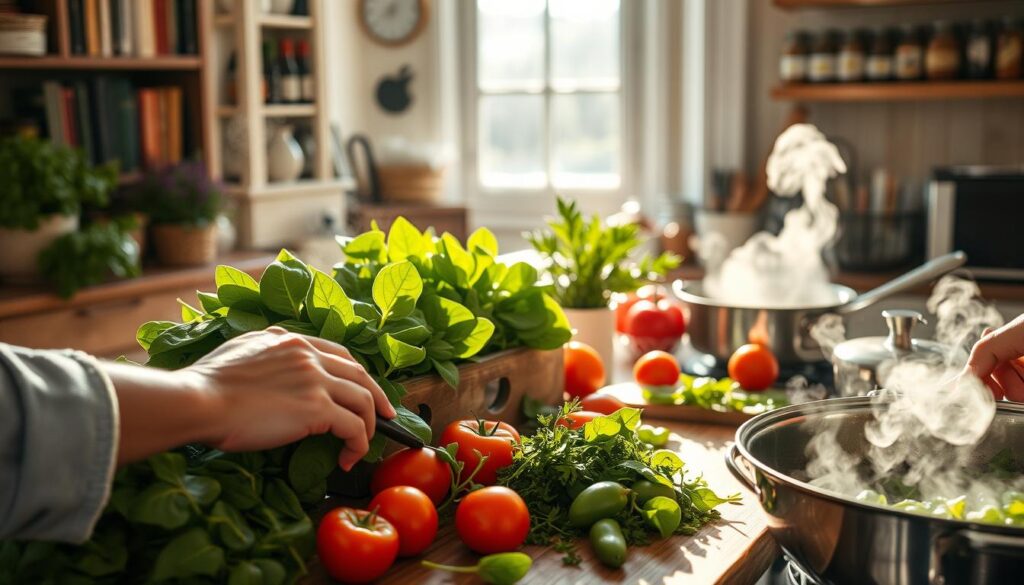
Common Mistakes to Avoid
When embarking on your spinach gardening journey, it is crucial to be aware of common pitfalls in companion planting that can compromise your success. Certain practices may seem harmless initially but can lead to significant problems down the line. Avoiding these spinach gardening mistakes will help ensure a flourishing garden full of healthy plants.
Overcrowding Your Plants
One of the most frequent spinach gardening mistakes is overcrowding. Planting too many seedlings in a small area causes competition for sunlight, water, and nutrients. This not only stunts the growth of your spinach but also adversely affects neighboring companion plants. To maintain healthy growth, follow these spacing guidelines:
| Plant Type | Ideal Spacing | Recommended Companions |
|---|---|---|
| Spinach | 6-12 inches apart | Radishes, Strawberries |
| Herbs (e.g., Basil) | 10-12 inches apart | Spinach, Tomatoes |
| Root Vegetables (e.g., Carrots) | 3-4 inches apart | Spinach, Peas |
Neglecting Soil Health
Another major concern involves neglecting soil health, a critical aspect of avoiding common pitfalls in companion planting. Healthy soil provides the foundation for your spinach and companion plants to thrive. To enhance soil health, consider the following practices:
- Regularly add organic matter, such as compost, to improve soil structure and fertility.
- Test your soil pH and nutrient levels to tailor amendments accordingly.
- Rotate crops each season to prevent nutrient depletion and pest accumulation.
By paying attention to these details, you can prevent setbacks that may arise from overcrowding and poor soil conditions, ensuring a bountiful harvest of spinach and its companions.

FAQs About Spinach Companion Planting
As you dive deeper into spinach companion planting, you’ll find it’s natural to have a few spinach planting questions. Understanding the best practices can elevate your gardening experience, leading to a thriving harvest. Here are some of the most common inquiries from gardeners, along with answers and valuable resources for further insight.
Top Questions from Gardeners
- What plants grow best with spinach? Compatible herbs include basil and parsley, while carrots and radishes work well as vegetables.
- Are there plants to avoid? Keep your spinach away from members of the nightshade family, like tomatoes, which compete for nutrients.
- How can I manage pests naturally? Incorporating flowers such as marigolds can attract beneficial insects that help control pest populations.
- What soil conditions do spinach and its companions require? Spinach prefers well-draining, nutrient-rich soil with a pH between 6.0 and 7.0.
Additional Resources for Help
Finding the right information is essential for your gardening journey. Here are some excellent resources for gardeners looking to expand their knowledge:
- Books: “The Vegetable Gardener’s Bible” by Edward C. Smith offers comprehensive guidance.
- Websites: Gardening Know How offers articles tailored to specific plant care and companion planting methods.
- Local Gardening Groups: Join a community garden or gardening club in your area for hands-on learning and support.
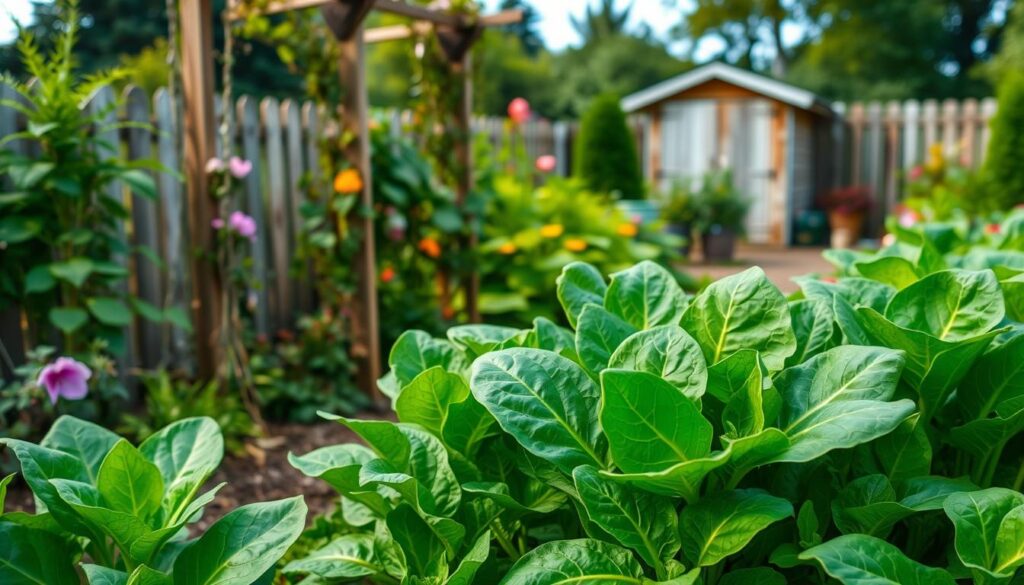
Closing Thoughts on Spinach Companion Plants
As you explore the realm of companion planting, the benefits of growing spinach alongside various herbs, vegetables, and flowers become increasingly clear. By implementing these companion planting tips, you’ll not only create a thriving garden ecosystem but also enhance your spinach’s growth, flavor, and overall health. It’s about building relationships in your garden that yield beautiful results.
Your Next Steps in Gardening
Now that you understand the essentials of which plants flourish beside spinach, take proactive steps in your gardening journey. Start by selecting the right companions based on their compatibility and specific growth requirements. Consider your soil conditions and sunlight availability, and adjust your planting plans accordingly. Remember, every successful garden begins with informed decisions and preparedness.
Embrace the Power of Companion Planting
Finally, embrace the philosophy of companion planting. This method promotes a more sustainable and productive gardening experience, allowing you to maximize your available space and resources. By prioritizing companion relationships, you’ll be sure to enjoy the fruits of your labor, creating a beautiful and bountiful garden, one strategic planting at a time.
